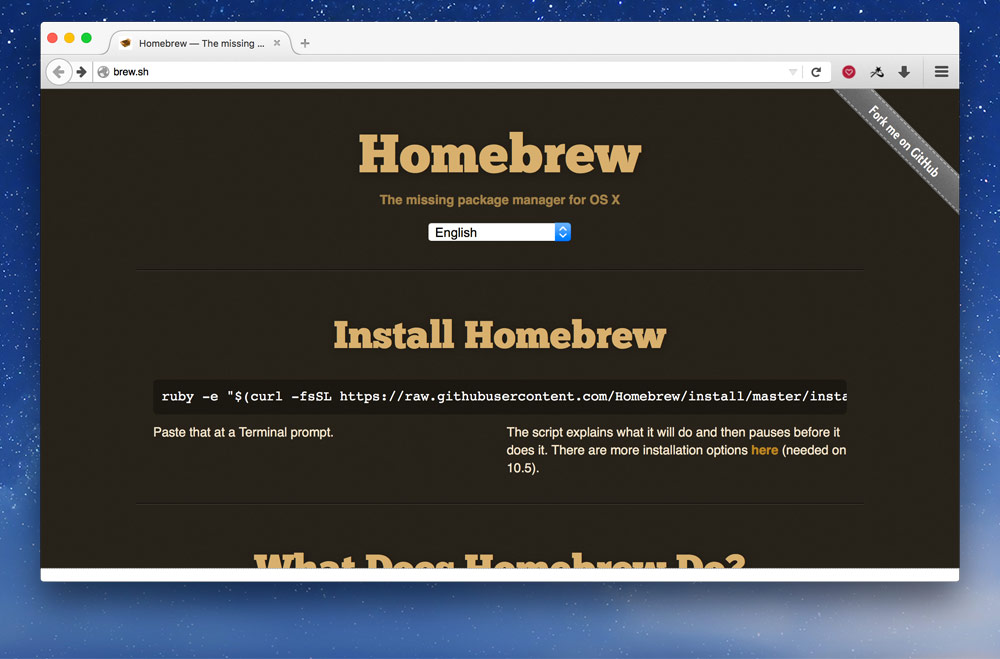

- #Update packages ruby jekyll install
- #Update packages ruby jekyll generator
- #Update packages ruby jekyll update
- #Update packages ruby jekyll upgrade
> Auto-regeneration: enabled for '/Users/octocat/my-site' > Destination: /Users/octocat/my-site/_site > Configuration file: /Users/octocat/my-site/_config.yml For more information about publishing sources, see " About GitHub Pages."
#Update packages ruby jekyll upgrade
We recommend that you upgrade your ruby-kramdown packages. For Debian 9 stretch, this problem has been fixed in version 1.12.0-1+deb9u1.
#Update packages ruby jekyll install
Ubuntu Jekyll Ruby Linux Install Jekyll 2 on Ubuntu 14.Tip: If you see a Ruby error when you try to install Jekyll using Bundler, you may need to use a package manager, such as RVM or Homebrew, to manage your Ruby installation. NOTE: kramdown is used in Jekyll, GitLab Pages, GitHub Pages, and Thredded Forum.
#Update packages ruby jekyll update
sudo gem update github-pages -no-rdoc -no-ri The same command can be used to update additional gems. Jekyll can be updated similar to installation, by using the gem update command. The files are placed into the _site directory and can be uploaded to a web server. Tell us what you love about the package or Jekyll, or tell us what needs improvement. ruby ( 2.6.3.1) Discussion for the Jekyll Package. The website can also be generated without starting a local server. To upgrade Jekyll, run the following command from the command line or from PowerShell: >. For example, when running locally use: jekyll serve -config _config-local.yml This is useful if you need different configs for a public site or when running locally. The default port 4000 can be changed, for example when running multiple Jekyll instances. Jekyll can watch the directory for changes and regenerate the website when files are modified. Jekyll is now successfully runnning! Extra Options Now that the basic config and layout are available, start Jekyll to generate the website HTML and start a local server. Create New Siteįor a new Jekyll site, use the new command to create a directory structure and config files. Please note: the -config option must be specified to run locally. Use git to clone an existing Jekyll website, such as this one! git clone We can either use a current website, or set up a new site from scratch. Now that Jekyll is installed, we need content for it to serve. sudo gem install github-pages -no-rdoc -no-riĪlthough not required, git is often used to manage the files of a Jekyll website.

RecommendedĪdditional gems can add features to Jekyll, such the github-pages gem which bundles together several gems supported by Github Pages. sudo gem install jekyll -no-rdoc -no-riĬheck that Jekyll has been successfully installed.

To include all documentation, omit the -no-rdoc -no-ri switches. For speed, we are excluding the extended documentation. Installation of nodejs is required because of an issue where Jekyll requires a JavaScript runtime even if it will not be used. sudo apt-get install ruby ruby-dev make gcc nodejs Install ruby, the ruby development libraries, and the make command. Tested with Jekyll 2.5.2 on Ubuntu 14.04 and 14.10 Install Prerequisites It is the default software used by Github Pages. It can be run on a server, or run locally and the generated files uploaded to a server.
#Update packages ruby jekyll generator
Jekyll is a static site generator with a templating system that can be adapted for many types of websites, including blogs. Although there are packages for Jekyll in the Ubuntu repository, the packages are for older versions of Jekyll. Additional features such as Rdiscount can be added with the same method. Jekyll 2 was recently released and can be installed on Ubuntu 14.04 or 14.10 using apt-get and gem install.


 0 kommentar(er)
0 kommentar(er)
